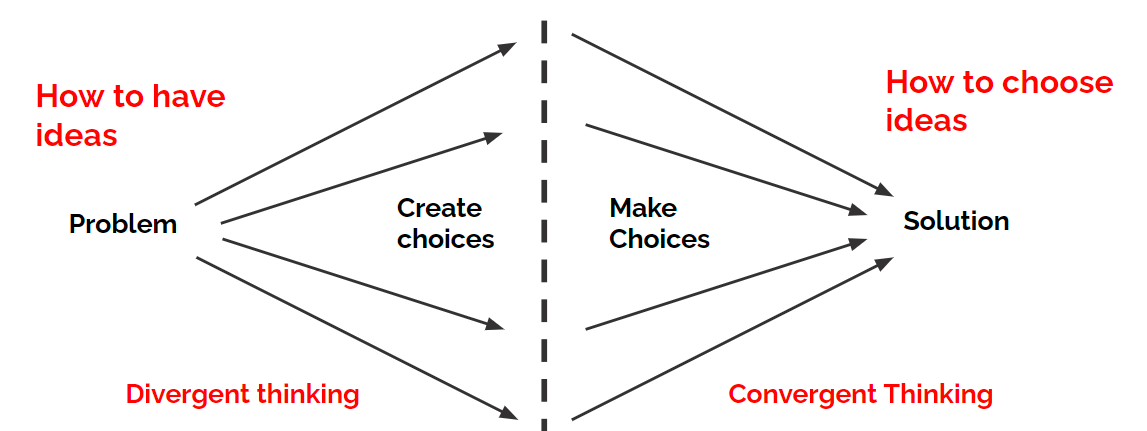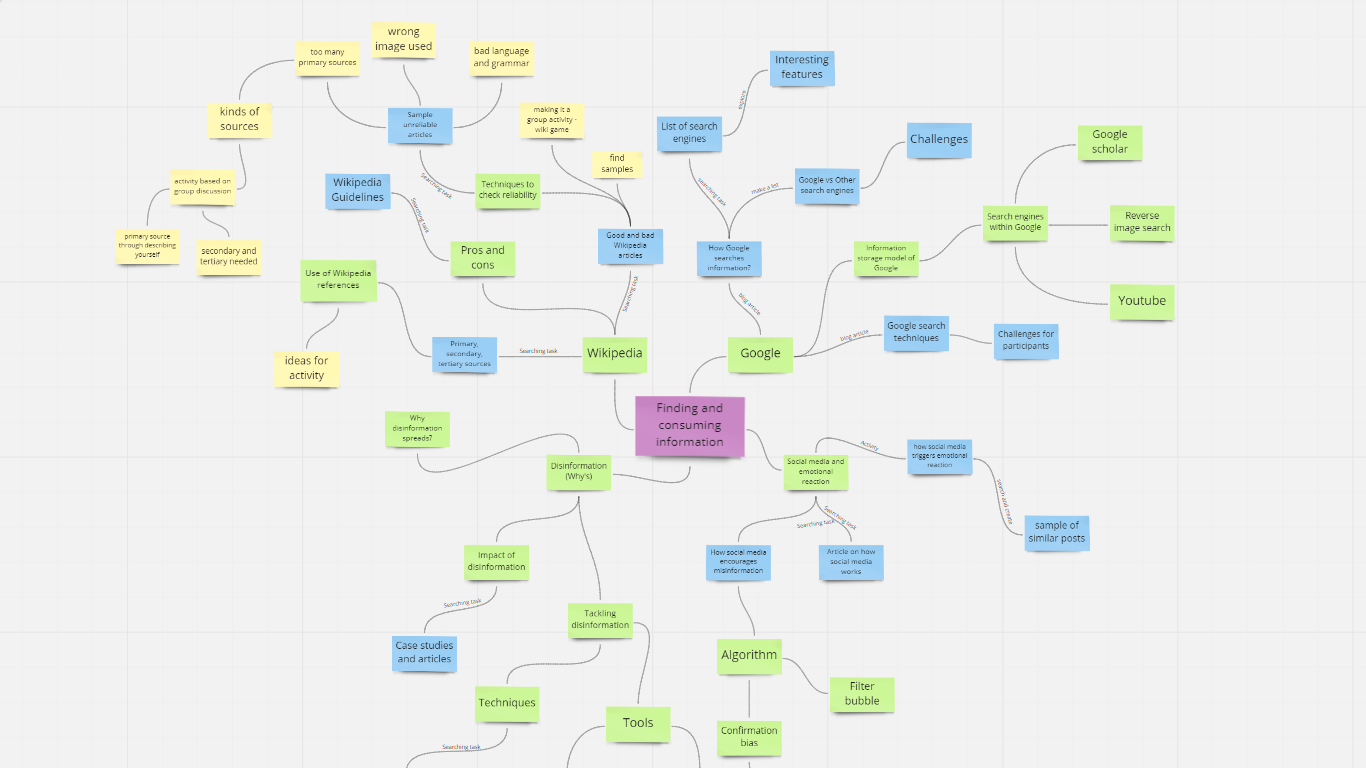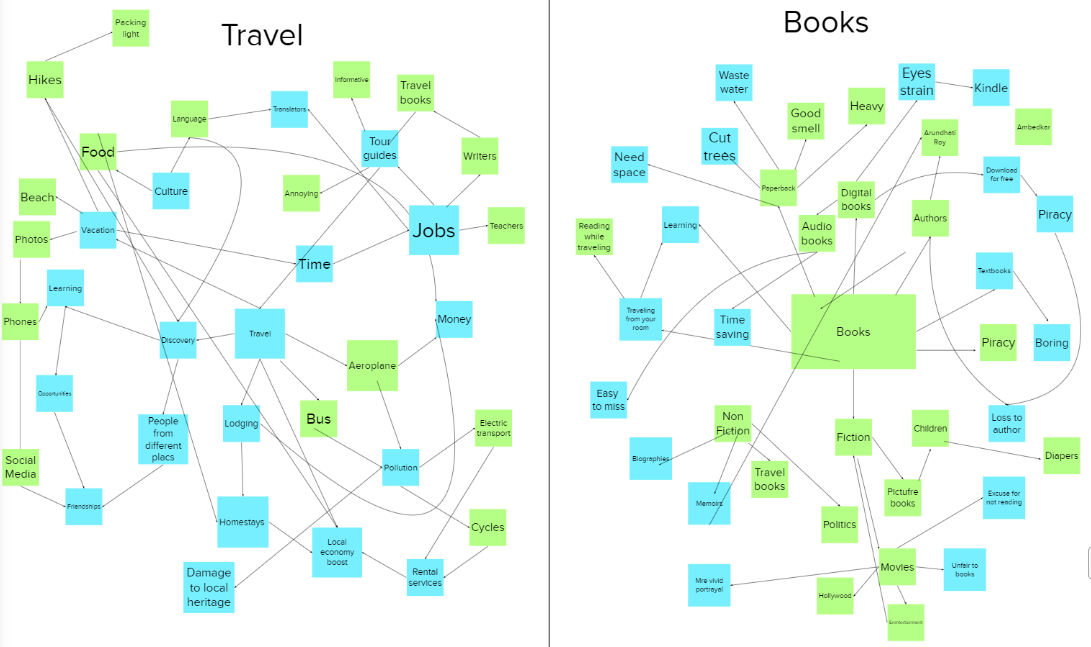Generating Ideas with Divergent Thinking
- Divergent thinking
- Convergent thinking

Our process of idea generation is fairly straightforward. First you generate a lot of ideas(some of which might be crazy, even stupid) and then filter out the good ones and finally pick the best ones. In this article about divergent thinking, we will focus on the quantity rather than quality of ideas generated.
The term divergent itself might have given you an idea of what it’s about. We start with the problem as the starting point and then we “diverge” out of it with ideas that point towards the solution. They need not be solutions, please keep this in mind. We are coming up with ways that might lead to a solution. We assume even before starting that most of the ideas generated will be not be useful. We are looking for the few creative ideas that might come along.
There are many techniques to help you with divergent thinking. In this article we’ll use the technique of mindmapping – something that we have been using at Karkhana for quite some time. The term mind map was made popular by Tony Buzan in his book The Mind Mapping Book. While the structure is almost the same, our mind mapping technique differs from Buzan’s in some significant ways. Our variation is more focused on generating ideas rather than helping you learn or remember.
Let’s begin with a visual example. The picture below shows one of the mindmaps we created while designing the first theme of this toolkit.

We needed ideas for the contents for the toolkit and four members from our team sat down to build mind maps. That reminds me, collaborative mind mapping has its own benefits and we’ll come to it later in this article.
You might do it on paper or on a writable screen or on digital whiteboard tools such as Miro. Use the medium you are most comfortable with. Put the topic on which you need ideas at the center of the page. Now, relax. It’s important that you relieve yourself of the pressure of coming up with good ideas. Think of it as a fun activity where you’ll see how many radical, out-of-the-box ideas you can generate. Here are the steps involved:
- See what comes to your mind when you look at the central topic
- Note them around the central topic
- Connect each to the central idea with lines
- Each new term on the map will generate more terms. Note them down and link each to the term of origin
- Let the map expand freely in all directions
A few things to keep in mind as you do so:
- Don’t judge your ideas (we’ll do it later)
- Note down ideas as they pop in your head
- Encourage radical ideas
- Focus on quantity over quality
You can stop after a brainstorming for a few minutes, when you feel that you have built enough connections among the thoughts noted down. Now we are ready to generate ideas. You must be thinking “didn’t we generate ideas in the mindmap?” Well, not completely. We have built enough associations to help us generate ideas. Now we just need to scan the mind map multiple times and note down any ideas that pop into our head. For example, running eyes over terms such as books, travel, social media can give you an idea – create a social media page for travel book recommendations. Now you can note down as many ideas as you can get from the mindmap. To learn to choose among those ideas, we’ll resort to convergent thinking.
Mind maps can be even more effective when you need to generate ideas on compound topics such as “Designing books for travel’ ‘. Because this topic can be split into two major elements, books and travel, you can create separate mind maps for each first.

Then, instead of proceeding with noting ideas, you can merge the two mind maps to form clusters. One such example is provided below:

Now you can scan the clusters and generate ideas that come to your mind. You can split the main topic into more than two elements if you have time, generate separate mind maps for each and merge them finally. This makes it easier to generate ideas compared to the conventional way of thinking and jotting things down.
Collaboration often leads to more and better ideas. Here is a list of digital whiteboard tools you can use to collaborate and generate mind maps while working from home
References:
The featured image is taken from stock.adobe.com